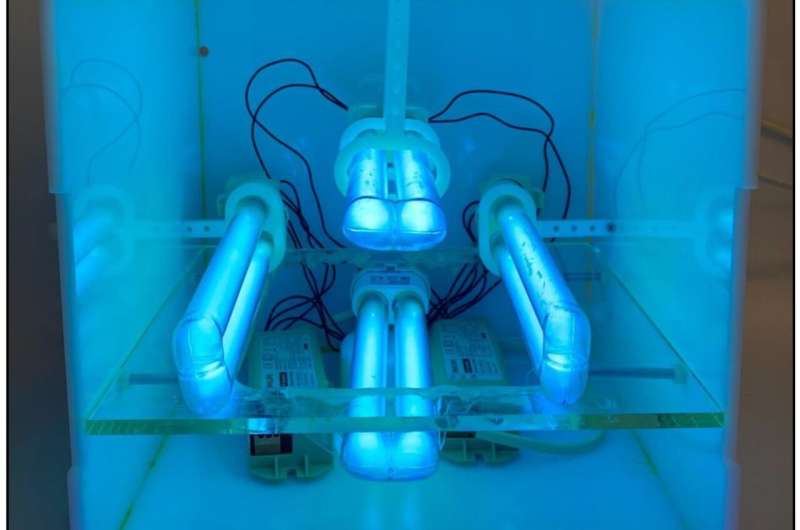This article has been reviewed according to Science X's editorial process and policies. Editors have highlighted the following attributes while ensuring the content's credibility:
fact-checked
peer-reviewed publication
trusted source
proofread
Double treatment stores salmon and strawberries for later

A simple two-step process that could be scaled for use in the home kitchen has the potential to dramatically cut food waste, KAUST researchers have shown.
Asrar Damdam, a Ph.D. student working in Khaled Salama's lab, has explored the benefits of combining UV irradiation with vacuum sealing to reduce microbial growth.
Food waste is a significant issue globally; nearly one-quarter of meat and one-third of seafood products are lost or wasted annually, often through microbial spoilage that occurs across the food supply chain.
Damdam has explored using UV-C irradiation and vacuum-sealing to prevent microbiological deterioration of beef, chicken and salmon filets, as well as strawberries and tomatoes.
The meat and fish samples were sterilized using a constant UV-C irradiation dose and stored in low pressure conditions. The team conducted a daily pH and microbiological analysis, which included counting the colonies of Pseudomonas spp., aerobic bacteria, lactic acid bacteria, Salmonella and Escherichia coli.
For the animal products, detailed microbial analysis revealed that the combined procedure extended shelf life by 67 percent more than a single treatment.
The strawberries and quartered tomatoes were subjected to a similar two-step process of radiation and vacuum sealing. These fruit samples were monitored for indicators of spoilage, including populations of yeast, mold and Pseudomonas sp.
For quartered tomatoes, the results were only slightly less than the animal samples at 54.4 percent, and for strawberries a highly impressive 124.4 percent extension was achieved.
The acceptable condition of the food was also verified by a panel of consumers that assessed its aroma, taste, color, texture and overall appearance.
Damdam's findings are significant, given the scale of losses of food supplies worldwide through overproduction, mishandling, transportation conditions, packaging issues and spoilage.
"Based on our scientific research and financial analysis, our technology has the potential to significantly reduce food loss and waste throughout the food supply chain. This could produce substantial reduction in cost and boost the alignment of food businesses with environmental, social and governance (ESG) goals," Damdam concludes.
Damdam adds that the procedure is simple enough to be adapted into a small appliance for use at the retail and catering level, or as a kitchen appliance for households.
Khaled Salama, a co-author of the research articles, comments on her enterprising drive. "Asrar's unique entrepreneurship skills allowed her to transition her research from a prototype in the lab to a functional product that is now making it to the market," he says.
The work is published in the Journal of Food Science and Foods.
More information: Asrar Damdam et al, Effect of combining UV‐C irradiation and vacuum sealing on the shelf life of fresh strawberries and tomatoes, Journal of Food Science (2023). DOI: 10.1111/1750-3841.16444
Asrar Nabil Damdam et al, Effects of UV-C Irradiation and Vacuum Sealing on the Shelf-Life of Beef, Chicken and Salmon Fillets, Foods (2023). DOI: 10.3390/foods12030606
Journal information: Journal of Food Science





















